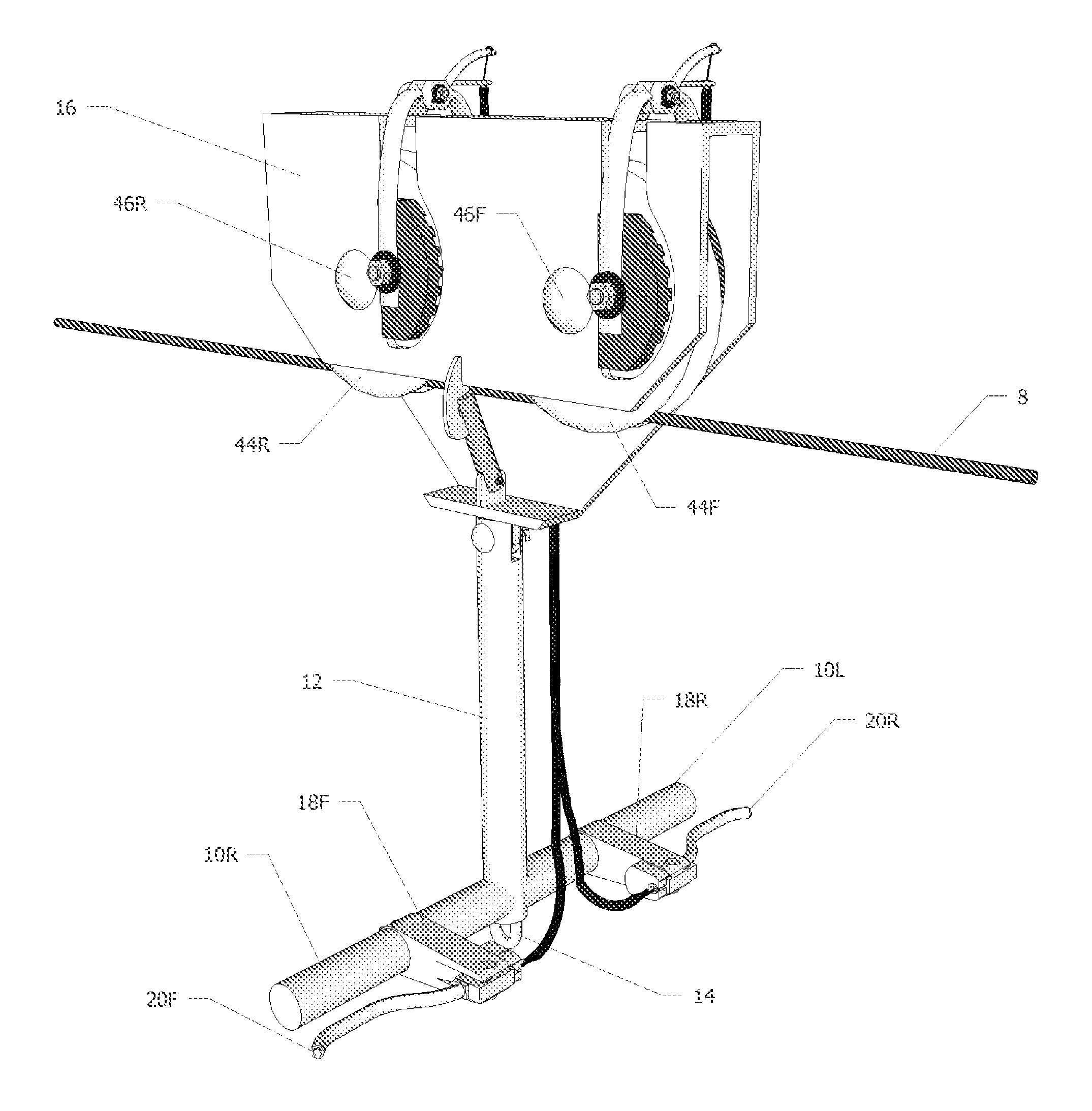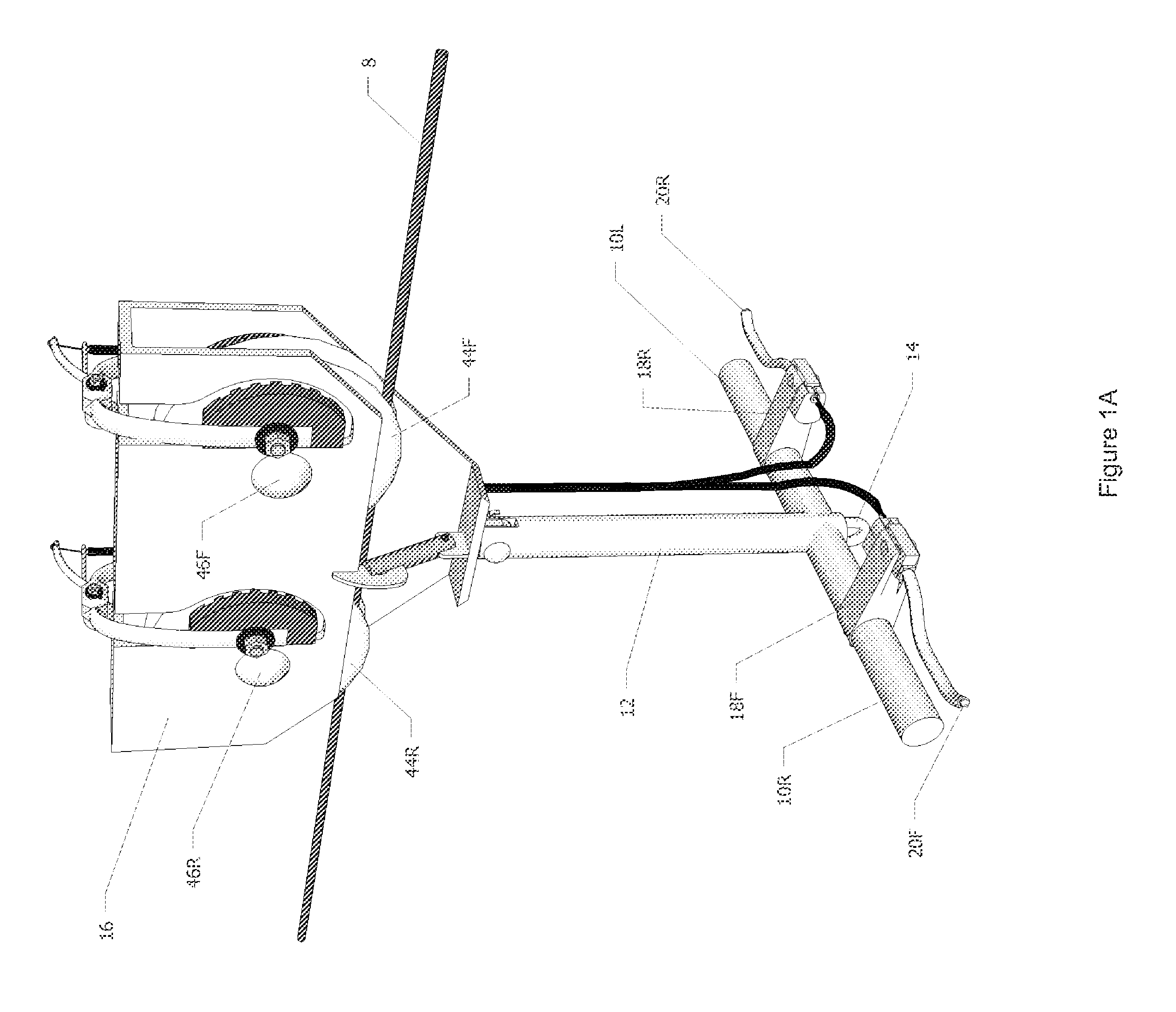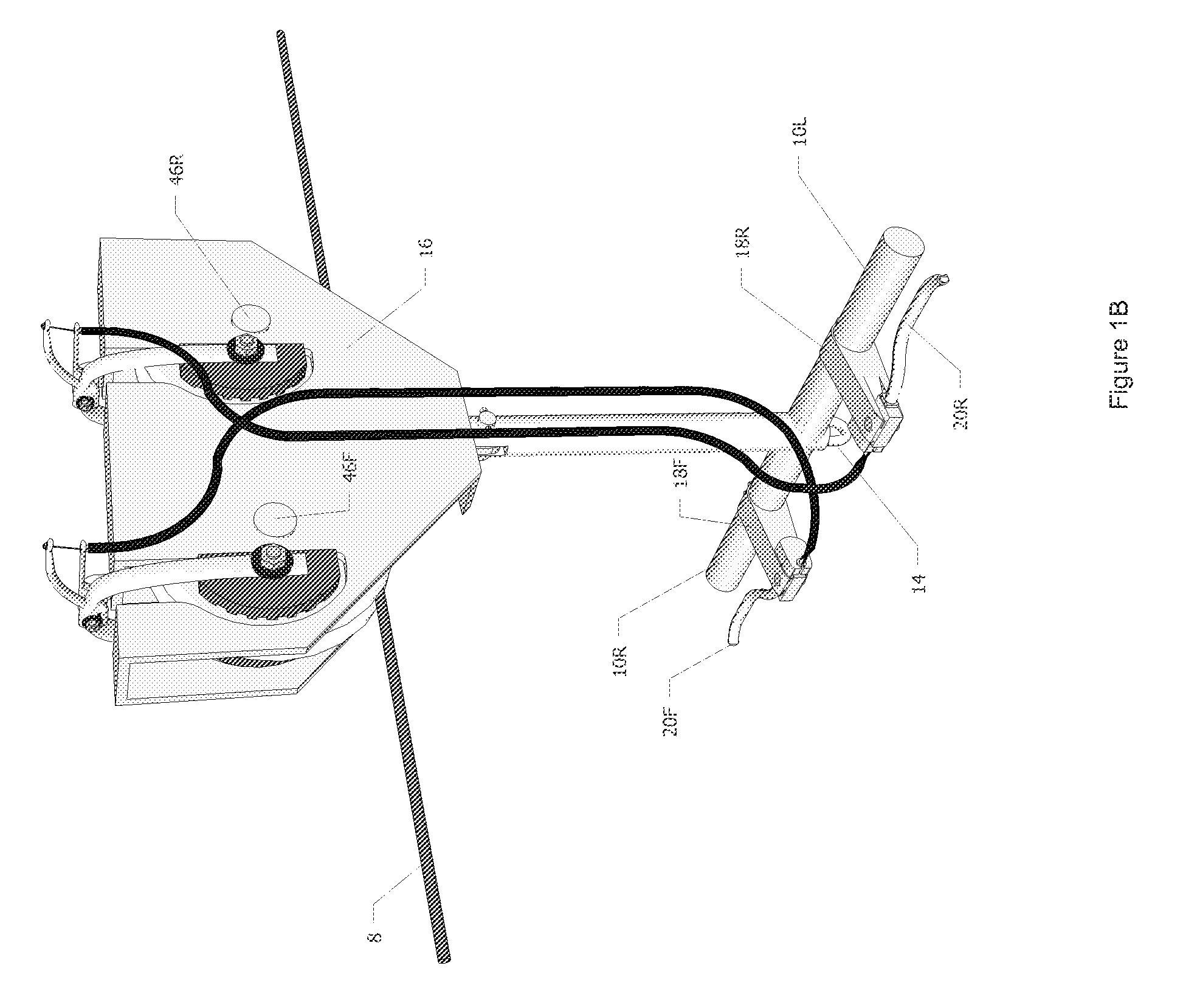The result is a downward slope of the suspended cable.
Unfortunately, they do not afford a rider the ability to control his or her speed of descent while traversing along the suspended cable.
None of the braking systems presently available for common zip lines allow a rider control of his or her speed in a safe, economical and easy-to-use manner.
Additionally, this method of bringing riders to a stop is imprecise and unpredictable in that riders of different weight will each develop a different
momentum.
This can complicate and add expense to the manner in which a zip line course designer designs the means for riders to disembark the suspended cable.
An additional problem with this braking method is the rider has no control of his or her speed while traversing along the suspended cable.
As a result, riders may accelerate to a velocity beyond their comfort level.
This is referred to as the “whip-lash effect” and is an undesirable and potentially unsafe function typical of such an
impact braking method.
Similar to gravity braking methods,
impact braking methods are also unpredictable and often do not allow for full utilization of the length of the suspended cable.
Furthermore, riders have no control of their velocity while traversing along the suspended cable.
Rubber tires witness similar results and potential safety hazards as those experienced with elastic cords.
As the rider intercepts the block, the brakeman restricts the
rope's motion, thus slowing the rider, often abruptly.
This is another imprecise and unpredictable braking method which can be unsafe for both rider and brakeman.
Furthermore, employment of a brakeman is an added expense to a commercial zip line
system.
Frictional braking can be the most dangerous among the common zip line braking methods.
This creates dynamic friction along the suspended cable, thus slowing the rider.
This can be dangerous in that the rider can wear a hole through the glove and rub his or her
skin along the suspended cable.
Both of these methods are unpredictable and dangerous as bodily harm can easily be experienced.
Other braking methods known within the art add considerable expense and complexity to a common zip line.
Many are rigidly fixed to a particular suspended cable, thus not easily transportable among other suspended cables.
They often include a complicated series of additional pulleys and cables which all must work in
unison to be operational.
Should any one piece of such a
braking system malfunction, the entire braking mechanism and rider's safety can be jeopardized.
As dynamic friction is created, premature degradation and deformation of the suspended cable occurs.
This adds expense to a common zip line
system by requiring earlier replacement of the suspended cable as well as creating a potentially unsafe situation for riders.
Suspended cable zip line systems are dangerous in their nature wherein the rider's safety is dependent upon the
structural integrity of both the trolley and the suspended cable.
A fabric harness, coupled with a
single point of connection to the trolley, creates the likelihood that the rider's position will twist while traversing along the suspended cable.
This can
pose a serious safety
hazard since the rider's feet may no longer be facing forward.
Common trolleys and safety harnesses allowing riders to twist can be especially dangerous for a zip line system which relies upon riders using their feet to facilitate braking.
Although the braking mechanism on Cylvick's device calls for a material to be used which is not intended to prematurely degrade the suspended cable, undesirable dynamic frictional forces are indeed created.
These frictional forces will accelerate wear and can result in a premature lifespan reduction of the suspended cable.
Replacement of these brake pads can be difficult in that the entire brake
assembly must be detached from the trolley and disassembled.
Furthermore, this particular trolley can be cumbersome to remove from the suspended cable.
It does not afford itself to quick and easy switching among different suspended cables.
Lastly, since the brake pads will wear and form to particular cable diameters, this trolley cannot safely be interchanged among different suspended cables each having different diameters.
This frictional force is undesirable in that it accelerates wear and can prematurely jeopardize the
structural integrity of the suspended cable.
However, riders have no control of their speed during the duration of the ride.
This trolley can be complicated to remove from the suspended cable in that partial disassembly is required.
The rider's speed of descent is predetermined based upon the rider's weight and does not afford speed control to the rider during the ride.
This braking method affords the rider no speed control while traversing along the suspended cable.
Common zip lines are not inexpensive to construct with the suspended cable often being the most expensive component.
The necessary combination of steel pulleys and other connecting members also adds considerable expense.
This
braking system is rigidly fixed to a particular zip line and does not allow for quick and easy transport among different suspended cables.
Lastly, an additional person, the guide, may be necessary to enhance the braking action which also adds to the complexity and expense of this braking method.
This apparatus does not allow the rider any control of his or her speed.
The pulleys, struts and crossbar described will add considerable expense to a common zip line.
Also, this apparatus is rigidly fixed and not easily transportable among other suspended cables.
The infrastructure and expense required to construct and operate such an apparatus is far beyond the means of a common zip line enthusiast.
The dynamic brake setting is predetermined and adjusted prior to descent along the suspended cable, thus limiting or possibly eliminating altogether the operator's control of his or her speed.
Furthermore, since the suspended cable is double or triple wound around the sheaves, transporting this apparatus to another suspended cable cannot be quickly or easily accomplished.
The intent of this apparatus is beyond the scope of a common zip line and would be cost prohibitive to apply to such a system.
This device is not intended, or practical for use on a common zip line system.
This device would not operate as intended if used in conjunction with a metallic suspended cable rather than a
rope.
Thus, this speed-retarding feature cannot be realized on a common zip line system.
 Login to View More
Login to View More  Login to View More
Login to View More 


